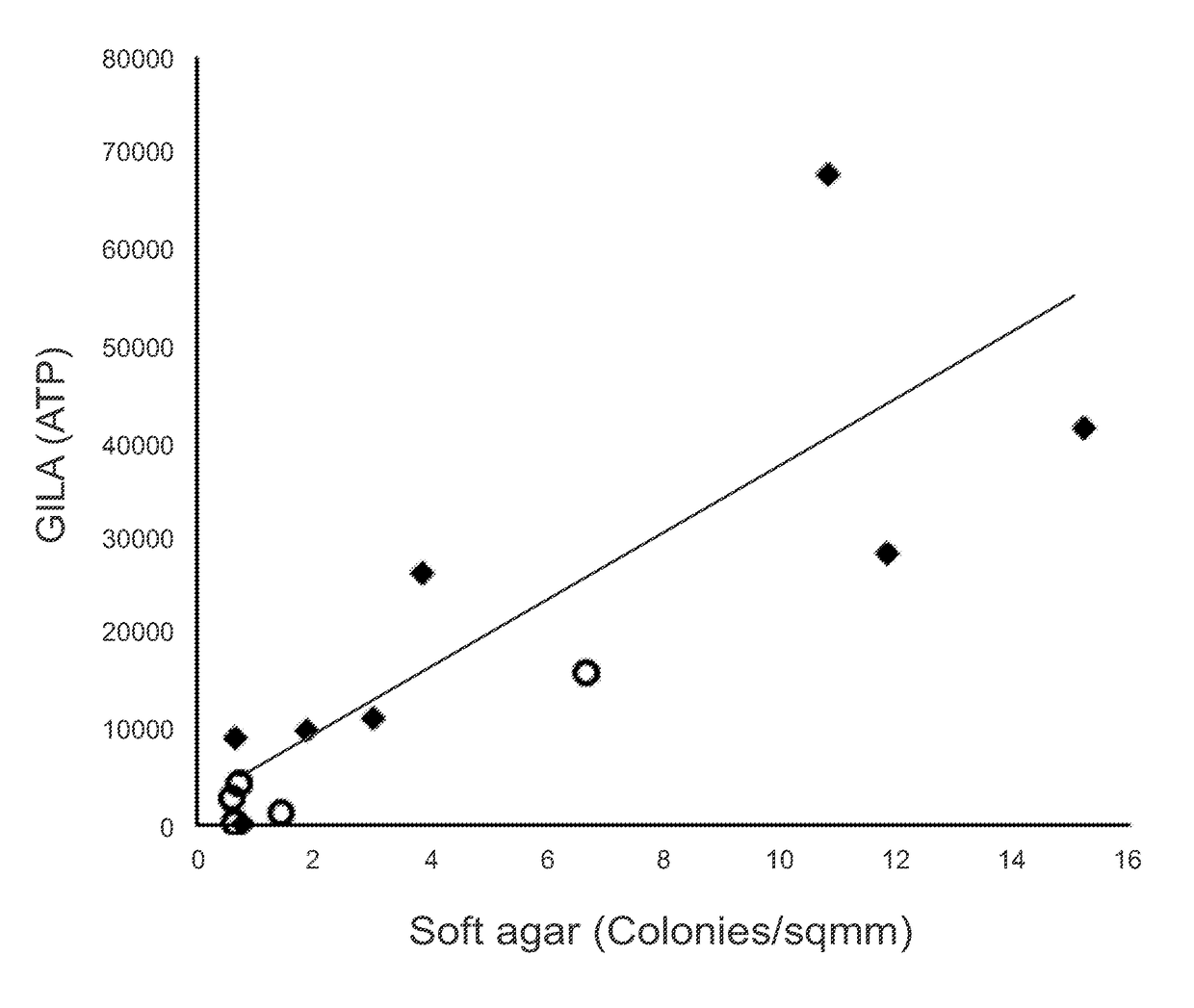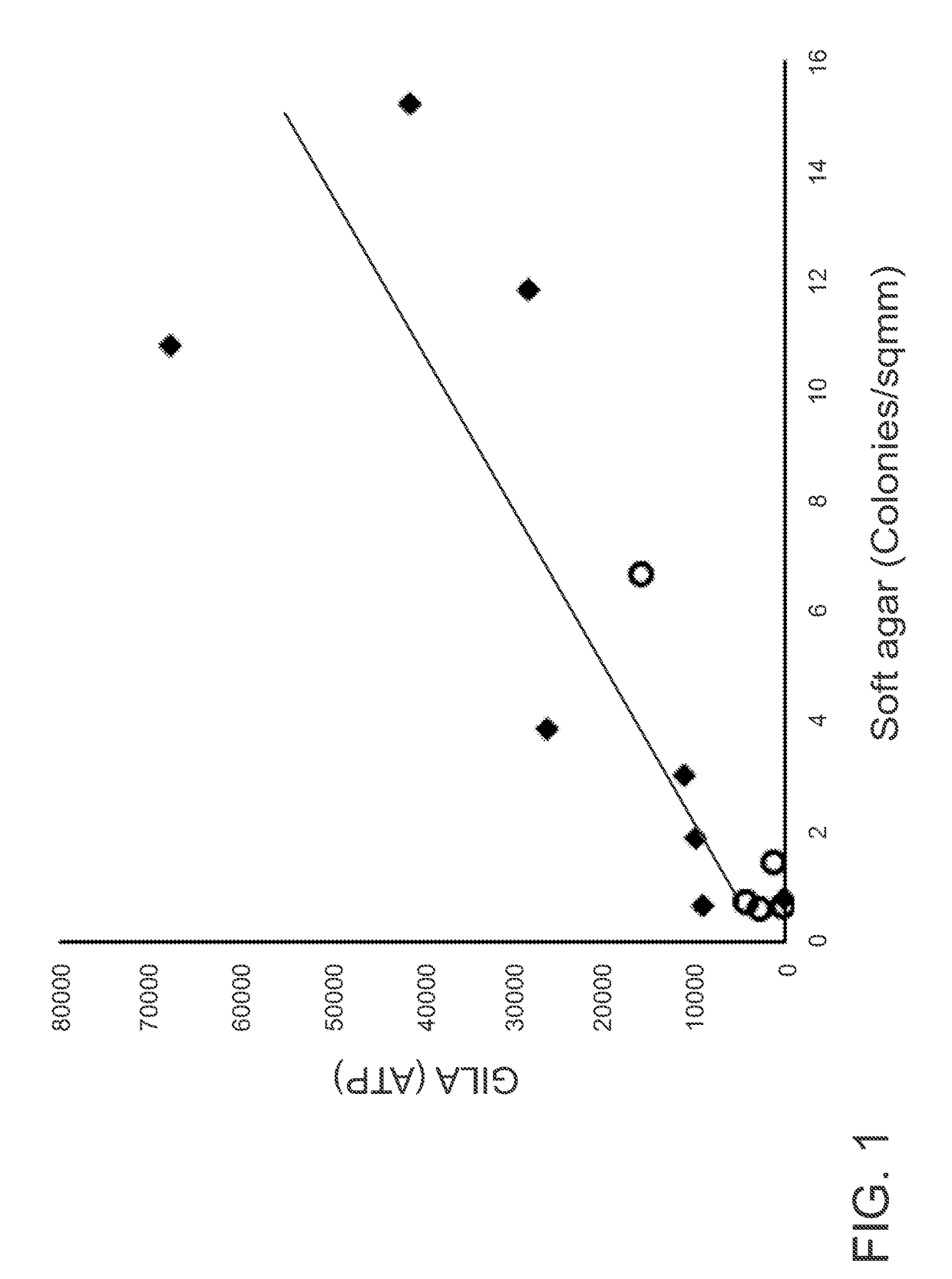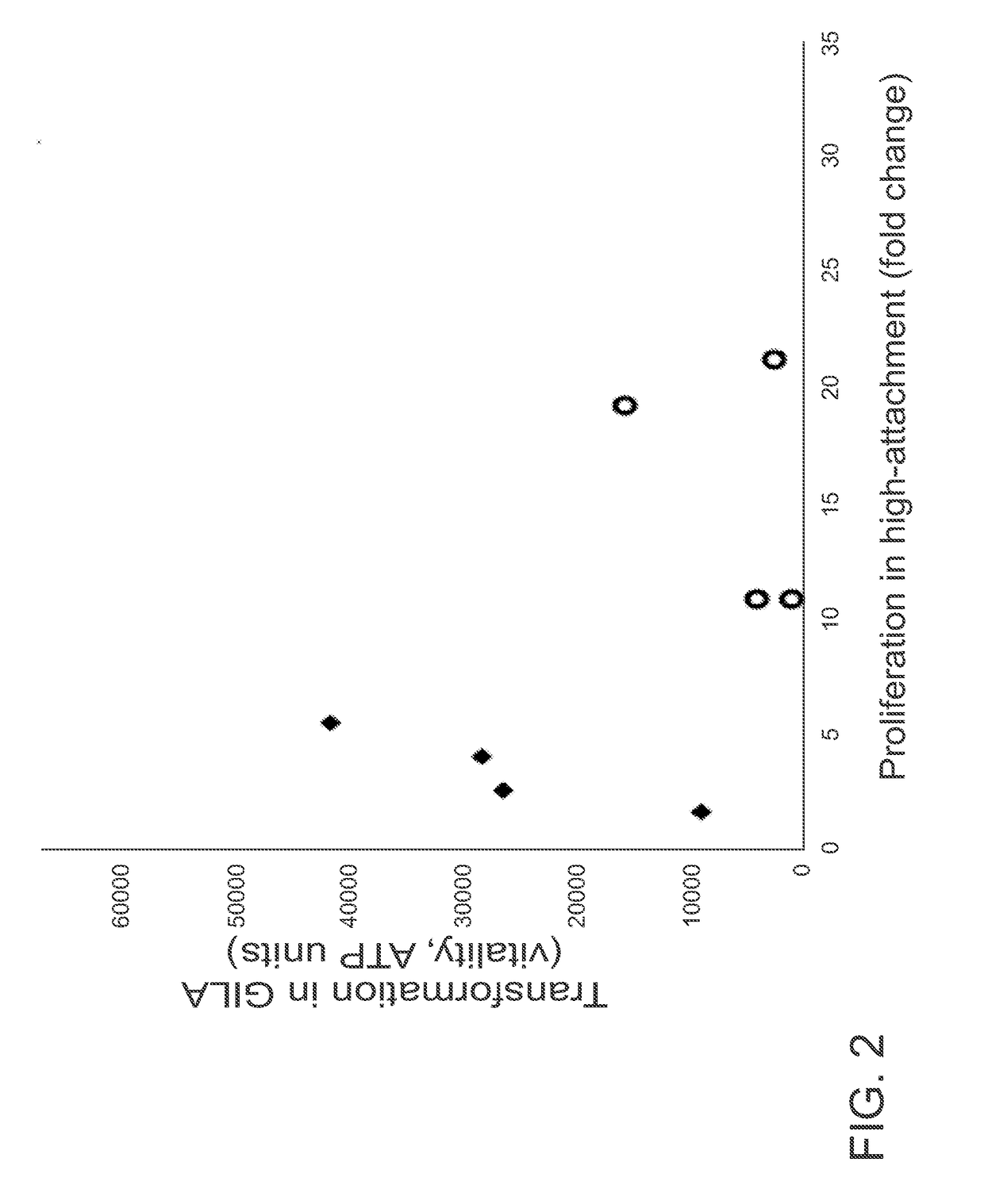High-throughput drug and genetic assays for cellular transformation
a high-throughput, cellular transformation technology, applied in the direction of genetically modified cells, instruments, skeletal/connective tissue cells, etc., can solve the problems of difficult to disaggregate individual cells, difficult to achieve rapid and quantitative, and difficult to detect cells grown on low attachment surfaces. to individual cells, the effect of increasing cellular transformation or tumorigenicity
- Summary
- Abstract
- Description
- Claims
- Application Information
AI Technical Summary
Benefits of technology
Problems solved by technology
Method used
Image
Examples
example 1
[0085]A Replacement for the Soft-Agar Assay that Permits High-Throughput Drug and Genetic Screens for Cellular Transformation
[0086]This example describes the development of the assays for measuring oncogenic growth and viability, and / or degree of cellular transformation of a sample, including a patient sample or a cell line, without the need for soft agar plates.
Results
[0087]The GILA Assay is Comparable to the Soft-Agar Assay.
[0088]The principle of GILA is that transformed cells can grow on low-attachment plates, whereas nontransformed cells cannot. A critical parameter for the GILA assay is cell density (number of cells / well), and for these experiments, this was optimized at 1000 cells / well in 100 μl medium for 96-well plates or 50 cells / well in 30 μl growth medium for 384-well plates. 13 cell lines originating from 4 different tissues-fibroblast, breast, ovary and prostate were examined (FIG. 6). An equal number of cells from each line were seeded into wells of an ultra-low attach...
example 2
[0118]This example describes a method for the assessment of tumorigenicity of cell, in vitro and ex vivo, and the steps towards optimizing the method for individual applications. This protocol presents one main method with three optional applications. The main method is GILA assay using cell lines, and an optional method is GILA assay using primary patient-derived cells. The two additional applications described in this protocol are pharmacological and genetic perturbations. While the unit describes the pharmacological approach for both cultured and patient derived-cells cells, the genetic screen has been used only for cultured cells. This protocol uses appropriate cell number and reagent volume for 96-well plates; some adjustment will be necessary if using another format.
Materials List
[0119]Solutions and reagents: Cell line, growth medium (DMEM, FCS, antibiotics), trypsin, PBS, cell counter device / hemocytometer, ATP quantification reagent (CellTiter-Glo kit, CTC, Promega), plate re...
example 3
ample Assay
[0195]This embodiment demonstrates the application of the growth in low attachment technology to detect drug sensitivity of tumor cells in a clinical environment.
[0196]Fresh tumors were dissociated and treated to exclude red blood cells. Tumor cells were cultured on high- and low-attachment surfaces and drugs were added after 1 day. At day 4 the cells were lysed and cellular ATP was measured as a surrogate of cell viability. Drug sensitivity of cells to a specific drug was compared between cells that grew on high- and low-attachment surfaces.
[0197]Several metastatic melanoma patients were sampled and fresh cells were treated with 4 targeted drugs specific for the RAF / MEK pathway; Dabrafenib (BRAF inhibitor), Trametinib (MEK1 / 2 inhibitor), SCH772984 (ERK1 / 2 inhibitor) and VX-11e (ERK2 inhibitor).
[0198]Patient number 1—GILA assay revealed that this specific individual might benefit from ERK1 / 2 inhibitors. The GILA assay was 10 times more sensitive at predicting this drug se...
PUM
| Property | Measurement | Unit |
|---|---|---|
| Concentration | aaaaa | aaaaa |
| Cell viability | aaaaa | aaaaa |
Abstract
Description
Claims
Application Information
 Login to View More
Login to View More - R&D
- Intellectual Property
- Life Sciences
- Materials
- Tech Scout
- Unparalleled Data Quality
- Higher Quality Content
- 60% Fewer Hallucinations
Browse by: Latest US Patents, China's latest patents, Technical Efficacy Thesaurus, Application Domain, Technology Topic, Popular Technical Reports.
© 2025 PatSnap. All rights reserved.Legal|Privacy policy|Modern Slavery Act Transparency Statement|Sitemap|About US| Contact US: help@patsnap.com



